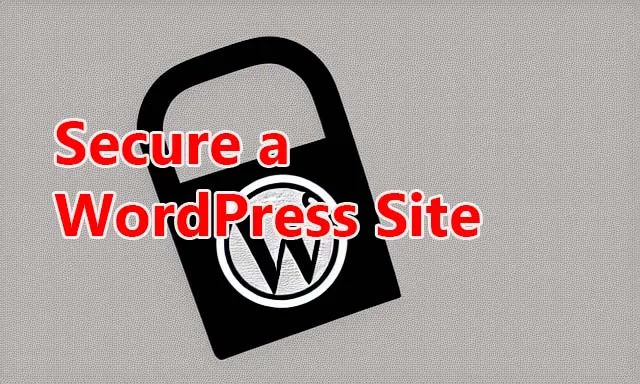Secure a WordPress website is very important to protect it from security threats like malwares , hacking, and spam . There are number of steps you can take to secure your WordPress site , ex: Making sure WordPress and plugins up to date, using strong passwords, using a security plugins , enabling two factor authentication , using a web application firewall, and limiting login atempts. using these WordPress security options , you can protect your website and the sensitive data it have.
Here some steps you can take to secure your WordPress website:
- Keep WordPress and plugins / themes up to date: Make sure that, you are always using the latest version of WordPress and wordpress plugins and themes , as these will often include security updates.
- Use strong passwords: Use strong , unique passwords for your WordPress account and for any other accounts that have acces to your website. don’t use same password for multiple accounts.
- Use a security plugin: Consider using a security plugin, such as Wordfence or Sucuri, to help protect your website from security threats. These plugins can help block malicious traffic and scan your website for vulnerabilities.
- Enable two-factor authentication: Enable two factor authentication ( 2FA ) for your WordPress account to add an extra layer of security. with this option you have to enter a security code generated by a authentication app on your mobile device , along with your wordpress account password when logging in.
- Use a web application firewall: Web application firewall ( WAF ) can help you to protect your website from common website attacks , like SQL injection and cross site scripting ( XSS ) , flood attacks .
- Limit login attempts: To Prevent brute force attacks ,Limit the number of failed login attempts that are allowed for your WordPress accounts , you can use a wordpress security plugin for this.
Here are some common WordPress security mistakes doing by webmasters :
- Using weak passwords: Chosing weak, easy to guess passwords for your WordPress account and other accounts that have access to your website.
- Using outdated WordPress and plugins / themes : By avoiding to update WordPress and plugins to the latest version, and don’t use plugins/themes downloaded from untrusted sources ( nulled or modified ) which can leave your website vulnerable to security threats.
- Using unsecured hosting : Using a hosting provider that does not take proper security measures, such as not using SSL/TLS certificates , always try find a reputable hosting provider.
- Not using security plugins : Avoiding to use security plugins, such as Wordfence or Sucuri, which can help protect your website from security threats.
- Not enabling two-factor authentication : Not using two-factor authentication ( 2FA ) for your WordPress account, which can add an extra layer of security.
- Not monitoring your website : Failing to monitor your website for unusual activity or security threats, such as malware or hacking attempts.
By avoiding these mistakes, you can help ensure that your WordPress website is secure and protected from security threats.
How to clean malware infected WordPress site
Here are some steps you can take to clean WordPress malware:
- Backup your website : Make a full backup of your website before attempting to clean it, in case something goes wrong.
- Scan malwares : Use a malware scan tool, like Wordfence Security or Sucuri, to scan your website and identify any malware that infected.
- Remove the malware : After you have identified malware infected files , remove it from your website by deleting all infected files ( replace a original copy ) or modifying any malicious code.
- Secure your website : Take steps to secure your website and prevent future malware infections, such as keeping WordPress and plugins up to date, using strong passwords, and using security plugins.
- Clean up your website : If your website was blaklisted by search engines or security firms, you need to clean up your website and request for a review in order to have it removed from the blacklists .
Using these steps, you may be able to clean your WordPress website malware infection and restore it back to a secure state. Its important to be careful when cleaning a website of malware, single missed piece of malware can lead to further infections.
Secure a WordPress website is important task that should not be avoided



